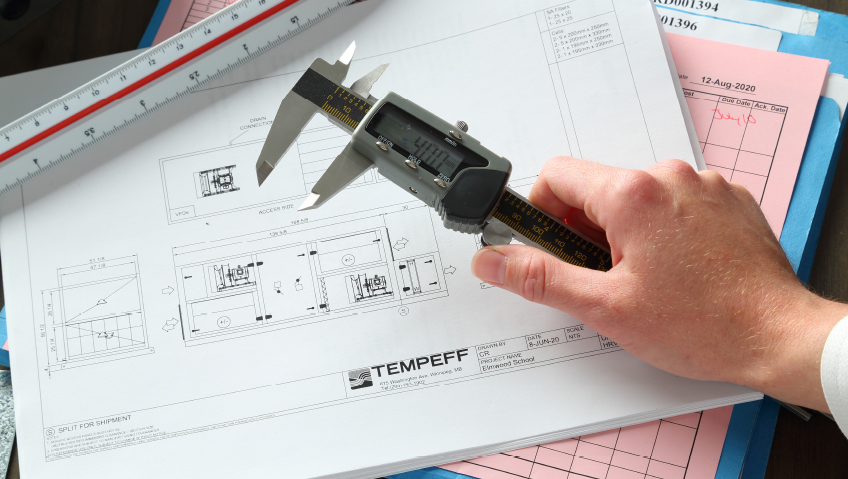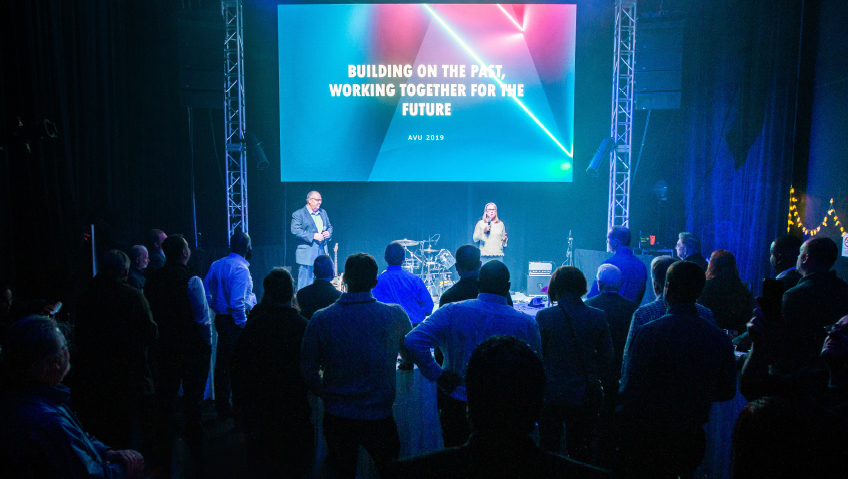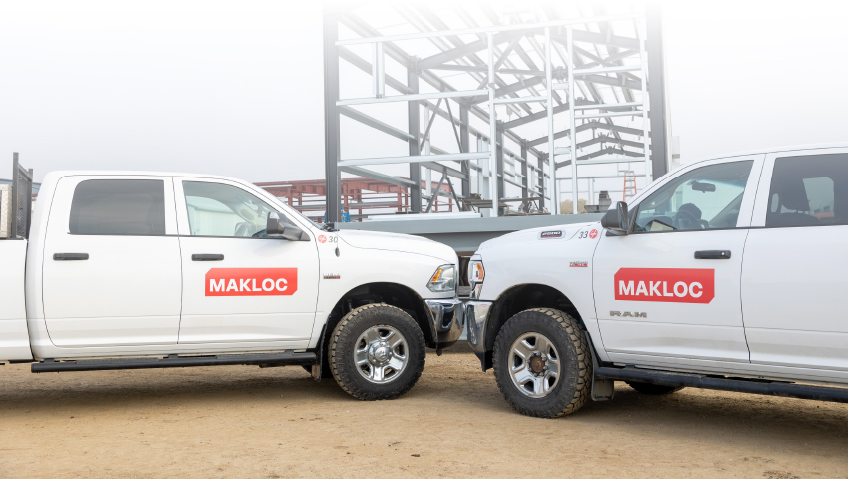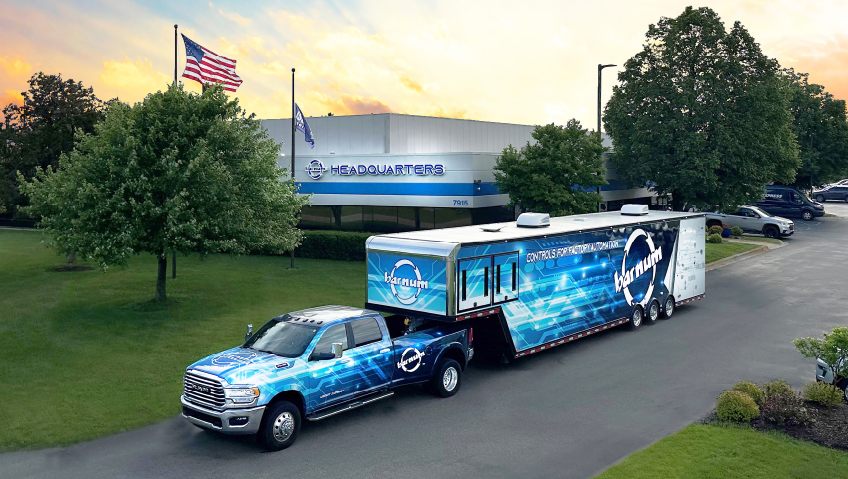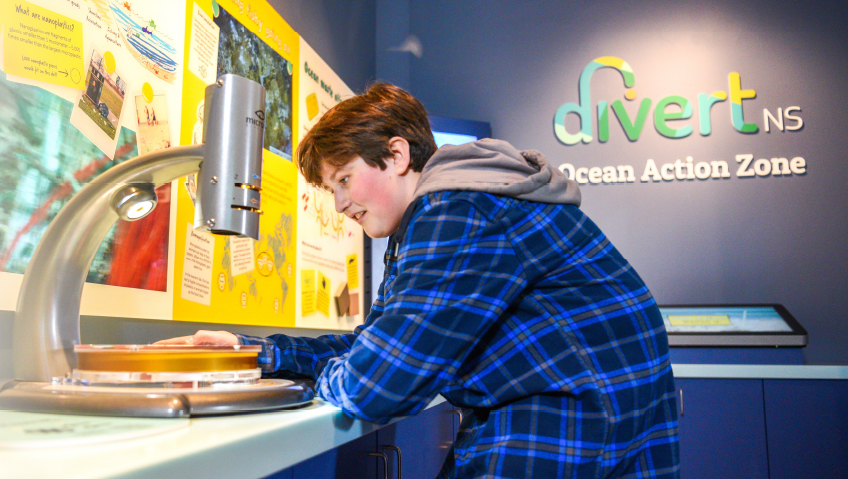Part of the NIBE Group—an international association of more than 120 independent enterprises that manufacture, distribute, and promote their own brands globally—Tempeff strives to reduce carbon emissions and improve energy efficiency by developing, manufacturing, and marketing environmentally friendly, energy-efficient solutions for indoor climate comfort for all types of properties through sustainable efficiency and exceptional eco-design.
“We believe we’re leaders in the industry,” says Tom Todoruk, National Sales Manager. “We operate under the belief that we want to drive the bus and we want to lead the industry. We have a crack R&D team here that spent a great deal of time and energy reviewing and evaluating our equipment and making changes to the equipment.”
Once you look through the history of this technology, he adds, it becomes clear that others in the industry are essentially following Tempeff’s lead.
“If we do something or we incorporate something in the equipment, we find our competitors will say, ‘that’s a great idea, let’s do it,’” says Todoruk. “We spend a lot of time, energy, and of course, resources, on improving and innovating our equipment. We’ve never told a customer, engineer, contractor, or rep that we don’t or won’t do something. That’s not what we do.”
Tempeff takes requests, suggestions, and requirements from customers and will spend the time and money to evaluate those requests for changes or modifications. If the team can accommodate, they will, and if not—which rarely happens—they will provide alternatives.
“If you give us an idea, we’ll evaluate that and if we think it’s marketable, we’re going to start to incorporate that in our equipment,” Todoruk says. “It’s a symbiotic relationship between our customers and us. Ideas we originate here from R&D we incorporate into our designs, and inform our rep network, which means engineers, contractors, and government entities.”
Customers also ask Tempeff to develop innovations with them, putting ideas together and incorporating them into equipment to make the mechanical design a little more seamless. “That’s one of the things that I’m proud of,” Todoruk adds.
Customer service is indeed a top priority for the company, although Todoruk prefers using a different term. “I would phrase it more as being responsive to customers’ needs. It’s not just service, because service implies that it’s an after-the-fact thing; whenever I hear service, I always think something’s wrong. We’re responsive to customers’ needs. If a customer wants to put a non-traditional component in our unit, we look at putting it in and nine times out of 10, it will be incorporated.”
In looking at seamless design from the engineering point of view as far as installation and ultimately, the end customer’s usage of the product, Tempeff has also started to incorporate other companies’ equipment into its own, such as controls. This helps reduce footprint and create a seamless operation—if there’s an issue, there’s only one person to contact.
This extends to Tempeff’s desire to always include the human factor in its operations, particularly to help customers when assistance is required. “We still have a little bit of automation, but once you figure out if you need to talk to R&D, sales, shipping, or accounting, when that phone rings, there will be a human there to answer your questions or give you advice. And that’s extremely significant.”
Those questions could pertain to Tempeff’s innovative DualCore products that help form the backbone of the company.
Because of the harsh environments in many parts of North America, air treatment is expensive. Air ventilation is crucial to the health of a building and, consequently, the well-being and productivity of occupants. Due to its extreme efficiency and resistance to frost, DualCore® technology upends the current state of heat recovery systems on the market, utilizing technology that constantly recovers energy throughout the day, preventing frost from accumulating.
This offers greater energy efficiency independent of outdoor air temperatures, resolving the long-standing issue of energy-robbing defrost techniques. Since there is no need for a defrost strategy, DualCore® architecture is far more energy-efficient under all circumstances, making true operating costs attractive in terms of efficiency and savings.
“The advantage of a DualCore Plus product is it will help reduce condenser sizes,” Todoruk explains. “This has the tendency to bring down your total mechanical costs because you can now use smaller condensers and smaller condensing units and reduce peak demand charges because of the high efficiency you’re gaining from the equipment itself.”
With conventional equipment, once it starts getting cold outside and the outside air temperature is freezing, traditional energy recovery equipment will have to incorporate a defrost mode in their equipment. When you incorporate a defrost mode, you’re designing your mechanical design as if you do not have any energy recovery because your system isn’t functioning during colder temperatures. “There’s no requirement for that defrost strategy with our equipment—none whatsoever. The cores won’t frost up, you’ll get continued energy efficiency.”
This technology is also part of the company’s commitment to helping create a greener, more sustainable environment. “The product itself screams energy efficiency and reduction in greenhouse gases,” Todoruk says. “If you’re using natural gas, you’re burning a lot of gas during the winter months to heat your space. To take that down from 100 degrees to 15 degrees or 12 degrees, that’s a lot of savings and a lot less greenhouse gas could be hitting the atmosphere. And this is equipment that can be installed commercially, industrially, and residentially.”
And Tempeff’s commitment to the environment is present in more than just the equipment it manufactures, he adds. The company is also dedicated to reducing and recycling waste—for instance, the aluminum sheets used for its heat exchangers are specially sized to limit waste.
“What we’re ultimately doing is paying more money to have this aluminum manufactured in a particular size for us to limit waste, and any waste we have on the aluminum is recycled,” Todoruk says. “Whatever it is we’re using, we tend to purchase as close to local as possible. We’re going to try and buy locally first and if that’s not the case, we’re going to go further until we can find a place close to us that offers good product at competitive price.”
This is done both for efficiency and to cut down on transportation costs and reduce diesel fuel emissions. “That’s part of the thought process here of ‘recycle and reuse.’ We do try to practice what we’re preaching.”
Tempeff is also looking to expand. Using manufacturers’ reps to go to market means it has local representatives in all the Canadian provinces and a majority of the U.S. states that represent its product.
“One of the reasons for the bigger push into the U.S. is it’s just a darn big market,” Todoruk says. “There are a lot of people there. It gets cold in certain parts of the U.S., but because the winters aren’t as long nor as severe, they’ve had a slower adoption process. They’ve looked at things a little bit differently, but now, through a lot of government initiatives, requirements, the change in standards, they’re crying out for this type of equipment, things that meet certain efficiencies and goals, and our product definitely fits that bill.”
Tempeff has been working with its rep networks and as a manufacturer will go out with its reps to various engineering firms to demonstrate the virtues and value of a product, including the benefits of green energy and overall system simplification.
“If you have equipment that’s constantly needing maintenance, what does that involve? That involves a phone call to somebody: somebody has to jump in a truck, or parts have to be flown in, and there’s a greenhouse gas effect. So, if you build reliable and durable equipment, you’re eliminating a lot of that, or at the very least reducing that. It’s greater than the sum of its parts here. It’s not just our equipment, it’s what our equipment allows within the boundaries.”
To that end, Tempeff is involved with industry groups such as NYSERDA (New York State Energy Research and Development Authority) in New York State, and NEEA (Northwest Energy Efficiency Alliance) in the Pacific Northwest, which has done an “amazing” job through the BetterBricks program to increase awareness into what’s available as far as equipment to bring down energy costs—and to create the desire to do it. Ultimately, it’s not just going out and trying to sell the product, Todoruk says; you’re also extolling the virtues of going green overall.
“Not only do we talk the talk, we walk the walk,” Todoruk says. “We actually care. If there’s a problem with our equipment, we’re going to fix it. If you need something specifically done, if you want to make our equipment dance, we’re going to do our best to get that equipment to dance to your tune.”
There’s a company-wide desire to do that, he adds, and that all dovetails back to being a leader in the industry. “I believe it’s that commitment that keeps us out in front—the fact that we believe in this technology for a whole bunch of reasons, not just because it’s simply a business.”
Of course, there is an altruistic factor, he adds. Most rational people believe that greenhouse gas emissions are harming the environment and impacting the climate, and if there is viable technology out there that is reasonable and cost-effective and can be easily implemented, Tempeff will strive to do its best to bring it to fruition.
“I think it’s our duty to relay that information to end users and to engineers to draw their attention to the availability of this product and what it can do not only for the building, but what it can do for the world in general,” he says. “We hold it to our heart here, the way that we manufacture the equipment.”

